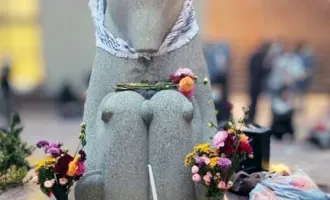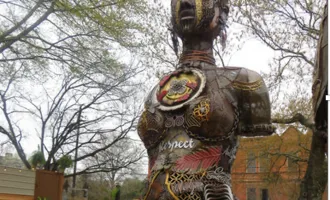
Haiti’s Earthquake: The Need for Trauma-Informed Care, Part One
One of the most cataclysmic events in the 21st century has a guttural, sonic signature. Burying more than 316,000 Haitians beneath collapsed buildings and homes, this earthquake, or goudou goudou (in Haitian Creole), was the worst catastrophe that the United Nations (UN) — a post-World War II, San-Francisco-born international organization — had ever responded to. As such, and “By many measures, it was the worst natural disaster in modern history,” according to public health scholars.
Sadly, on August 14, 2021, seismic, or earthquake, history repeated itself.
Below, and beyond, in detailing this painful devastation, this serialized piece will show how Haiti’s ongoing hardship is linked to the country’s scientific and seismic past. Central to this work will be a discussion of Haitian history, starting in reverse chronological order and ending with pre-independence Haiti.
In highlighting, in a primary vein, some formerly-successful paths through which to recover from this latest earthquake, a breakdown of the medical exploitation suffered by enslaved 18th-century Afro-Haitians will be presented.
Also important, in a secondary vein, is the laying down of a conceptual foundation calling for the delivery of trauma-informed care and pursuit of humanitarian relief efforts aimed at helping Haiti’s 12 million people regain their medico-econo-political strength.
The 2021 Earthquake and Pre-Existing Challenges
On Saturday morning, August 14, 2021, as many Haitians were home resting, Haiti’s sun came to life and showered its golden rays over the glinting waves of the country’s sky-blue seas.
In the distance, roosters sang, as the moon melted into Haiti’s gray morning sky.
With trees straddling their wrinkled, rough-hewn slopes, mountains basked in the dew, as Haiti’s wind caressed the tall coconut trees near the country’s southwestern shorelines.
Up above, the clouds unfurled, birthing twilight, as flocks of songbirds heralded a new Caribbean morn.
Suddenly, in stark contrast, a suffocating haze of dust surfaced, as land and everything else resting above a stretch of layered, fractured rock, namely the Enriquillo–Plantain Garden, jolted and wobbled.
Across towns and villages nearly 80 miles (or 125 km) west of the capital city of Port-au-Prince, at least 94 schools, 36 health facilities, and tens of thousands of buildings and homes crumbled.
As a result of this devastation, more than 2,200 people lost their lives, with at least 12,200 others suffering major injuries.
Through its National Disaster Risk Management System, Haiti’s Civil Protection Directorate has, to date, issued ten emergency situation reports.
These documents’ contents have been expanded upon, in part by publications circulated by the UN Office for the Coordination of Humanitarian Affairs, as well as U.S. Agency for International Development (USAID).
One of the recently-published Directorate reports, issued on August 25, specifies that, in addition to the thousands of deaths, at least 320 Haitians are missing, and 129,959 structures are damaged throughout Haiti’s southwestern tip, within the Sud, Grand’Anse, and Nippes departments (or administrative divisions).
Distressingly, the August 14 destruction took place at a time when Haiti is grappling with deaths and life-threatening medical conditions tied to the severe acute respiratory syndrome coronavirus 2 (Sars-CoV-2) and its associated disease (COVID-19).
Before the earthquake had struck, it was also reported that Haitians were coping with insecurity, brought about by gang-led violence, kidnappings (most recently and publicly of some Haitian medical doctors), and other crimes.
Given its catastrophic toll, out of a total of 2.2 million earthquake victims and survivors, the August 14 earthquake has left 137,000 Haitian families in need of emergency humanitarian aid, in the form of medical care, housing, and other much-needed goods and services.
Of high importance, and adding insult to grievous injury, is the fact that, during the night and morning of August 16-17, storm tracking statistics show that Tropical Storm Grace poured heavy rains over parts of Haiti.
Considering Haiti’s deforestation, linked to its reliance on firewood, soil erosion, and clogged urban waterways, the downpouring set the scene for major flooding and mud-sliding, while hindering ongoing, life-saving relief efforts.
The Jovenel Moïse Assassination and Recent Investigative Findings
A month, or so, before the Storm Grace rains, and sudden terror brought about on August 14, Haiti had found itself swept in the world’s fast-moving news cycle due to a shocking political incident.
On the early morning of July 7, 2021, five months past the assumed date of his mandate, Haitian President, Jovenel Moïse, had passed away.
When Haitian authorities discovered Moïse’s corpse, physical trauma —in the form of gunshot wounds and broken cranial bones —revealed, in part, how he had died. Multiple firearm projectiles had damaged Moïse’s vital organs, leading to his death and gravely wounding his wife, Martine.
Though Moïse’s manner of death is still under investigation, some details have, thus far, sprung into publication and received corroboration. For instance, moments before his killing, while Moïse, Martine, and their three children were at home resting, a heavily-armed, cross-border, and large group of highly-trained assassins broke into the security perimeter of the Moïse residential compound.
Recent findings by a Port-au-Prince-based member organization of the multinational International Federation for Human Rights, namely the National Network for the Defense of Human Rights (RNDDH), confirmed suspicions that Moïse’s killing was an inside job.
This death-dealing betrayal was planned during a chain of supposedly secret meetings held at hotels, private residences, and even a high-instance, appellate Haitian court.
After more than a month of investigating, the RNDDH concluded in a nearly 30-page report that the cross-country and multi-party mission was structured such that it would, at first, lead to Moïse’s arrest. Later, the alleged co-conspirators’ goal changed to murdering the sitting President.
Most importantly, the RNDDH claims that Moïse’s murder would be impossible without the support of key members of the ex-President’s security organization.
As confirmed by Martine Moïse, from the first shots fired by the assassins outside of his family residence, Moïse began calling for help.
According to the RNDDH, at least four separate high-level security officials answered Moïse’s calls (one of whom is alleged to be a drug trafficker), reassuring the political leader that they would rapidly send armed reinforcements.
As fate would have it, these reinforcements never came.
Moïse, his wife, and children, in turn, had to fend for themselves — against more than two dozen trained killers carrying high-powered rifles, grenades, drones, and night-vision goggles.
And this consequential abandonment was the Machiavellian work of influential leaders within the security arm of Moïse’s government, who had plotted with the President’s attackers, says the largely-anonymous RNDDH.
In contemporary terms, in addition to being grim, this deadly incident marked the first, and hopefully last, instance of a sitting Haitian president being killed by armed and invading foreign-born mercenaries.
As various coups and presidential assassinations have happened throughout Haitian history, Haitian presidents have alleged before that external actors, with ties to Haiti and beyond, have conspired to kill or seize power from them.
In the early 1980’s, for instance, some Haitian exiles were arrested, in relation to their “plotting to take on the Haitian army and topple dictator Jean-Claude (Baby Doc) Duvalier.”
In 1958, Alix Pasquet (nicknamed “Sonson”), a Haitian lawyer, World War II and Tuskegee Airmen fighter pilot, soccer star, and revolutionary, had laid out an example for the above exiles to follow.
Joining forces with two Haitian military officers and five American nationals, including three ex-deputy sheriffs, Pasquet sought to depose Haitian tyrant François (Papa Doc) Duvalier.
Pasquet attempted his coup by at first seizing a Port-au-Prince barrack and later spurring Haitian anti-Duvalier troops to attack the Palè Nasyonal, or Presidential palace.
Ultimately, the armed support that Pasquet was counting on failed to materialize, and all eight brothers-in-arms were killed by Duvalier forces.
Fundamentally, although actors working within and outside of Haiti to destabilize the country’s government is not a new phenomenon, the brutal and brazen nature of Moïse’s killing was, in many ways, a new occurrence throughout Haiti’s 217 years of history.
The last Haitian head of state to have suffered an assassination of this magnitude, in terms of violence, had died in 1915 —when Haitian President Vilbrun Guillaume Sam had suffered impalement over the sharp iron pickets fencing the French Legation, or embassy, in Haiti.
Some members of the Haitian public had turned against Sam after the President had ordered the killing of 167 jailed political prisoners, including ex-Haitian President Oreste Zamor.
That year, following Sam’s assassination, the U.S. invaded Haiti.
After their invasion, American forces went on to not only occupy Haiti for the next 19 years but also to profoundly shape the country’s finances for the next 32 years, ending shortly after the Second World War.
Foreshadowing
The second part of this series will briefly revisit Haiti’s founding before highlighting some of the scientific experiments that Age of Enlightenment doctors conducted on Afro-Haitians during pre-independence Haiti.
The trauma inflicted by Enlightenment scientists and French colonizers echoes cross-generationally. The harms brought about by trauma are reinforced by inequalities that continue to shape the lives of present-day Haitians, and which started with an injustice that arose from institutions, many of them Euro-American, putting into practice race-based and racist beliefs.
In Haiti’s case, as outlined in Part Two, the traumatic effects of some actions pursued in the name of science have merged with and been aggravated by present-day anti-Haitianism and anti-Black racism. These intolerant attitudes have been communicated and acted upon through an excessive push towards Eurocentric sameness and an unfavorable opinion of Blackness, Afro-Haitian religiosity, and Haitian personhood.



